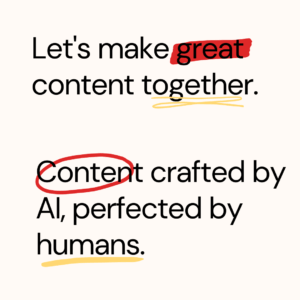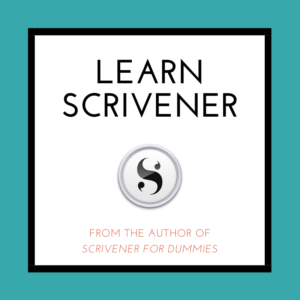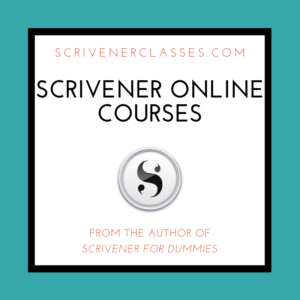Content creation is more than just stringing together words. It’s about crafting messages that resonate, inform, and inspire. So, what exactly is content creation? It’s the process of generating ideas tailored to your audience and producing engaging materials like blog posts, videos, infographics, and more. Anything you put out there for others to consume that’s content.
Now, you might be wondering why content is so dang important. In the digital marketing world, content is everything. It’s your voice, your brand, your way of connecting with your audience. Without good content, all those marketing strategies fall flat. Think of content as the foundation of all your marketing efforts.
Setting goals is a big part of becoming a master at this game. What are you looking to achieve? Maybe it’s building brand awareness, driving traffic, generating leads, or improving customer loyalty. Having clear objectives will keep you focused and motivated. Plus, it helps you measure your success along the way.
Being a master content creator involves a mix of creativity, strategy, and a deep understanding of your audience. This journey is all about learning, experimenting, and adapting. Ready to dive in and make some magic happen?

Understanding Your Audience
Identifying who you’re talking to is the first step to creating stuff that clicks. Who are your readers, viewers, or listeners? Focusing on your target audience makes your content more relevant and impactful.
Research is your best friend here. Dive into analytics, social media insights, or even direct feedback to understand what your audience likes, dislikes, and needs. The better you know them, the better you can tailor your content.
Creating audience personas can be a game-changer. These are fictional characters that represent segments of your audience. They help put a face to the data, making it easier to craft messages that resonate.
Engagement is a two-way street. Encourage your audience to interact with your content through comments, shares, likes, or follows. Responding to their feedback builds a community around your brand and gives you valuable insights.
Developing a Content Strategy
Setting clear objectives is like giving your content journey a GPS. Know what you want to achieve, whether it’s boosting website traffic, increasing engagement, or driving sales. Goals keep you focused and guide your efforts.
Choosing the right types of content is essential. Not everything works for everyone. Blog posts, videos, social media updates, podcasts, infographics – each has its place and purpose. Match the content type to your audience’s preferences and your business goals.
A content calendar is your strategic ally. Planning out your content in advance helps maintain consistency and ensures you’re covering all essential topics. Plus, it takes a lot of stress out off last-minute scrambling.
Measuring success isn’t just about counting likes or shares. Track metrics that matter to your goals, like conversions, click-through rates, and engagement levels. Use these insights to tweak your strategy and make continuous improvements.

Creating High-Quality Content
Quality content stands on three pillars: being informative, engaging, and relevant. Your content should offer something valuable to your audience, whether it’s new information, a fresh perspective, or entertainment. Keep your audience’s needs front and center.
Effective storytelling is key. People love stories – it’s how we’ve shared knowledge and experiences for centuries. Weave narratives that are relatable and compelling to make your content memorable. Share your personal experiences or success stories to create a deeper connection.
Multimedia elements can take your content to the next level. Incorporate images, videos, infographics, and other visual aids to make your content richer and easier to digest. Multimedia can break up long texts, making your content more inviting and shareable.
Accuracy and credibility are non-negotiable. Ensure all your information is well-researched and fact-checked. Citing reliable sources not only bolsters your credibility but also builds trust with your audience. If you’re providing data or statistics, make sure they come from reputable sources.
Optimizing Content for Search Engines
Basic SEO skills are like the bread and butter of content creation. Get these right, and your content stands a better chance of being found. Understanding SEO is about knowing how search engines rank and display content.
Keyword research is where it all begins. Find out what terms your audience is searching for and incorporate them naturally into your content. Tools like Google Keyword Planner or Ahrefs can be super helpful here.
On-page SEO techniques are your next step. This includes optimizing your title tags, headers, and even the URL. It’s not just about stuffing keywords; it’s about creating a seamless experience for both the readers and search engines.
Meta descriptions and tags might seem small, but they pack a punch. These elements give search engines a summary of what your content is about. Write compelling meta descriptions that include your target keywords to increase click-through rates.
Remember, while SEO is important, don’t sacrifice quality or readability. Google’s algorithms are smart; they can tell when you’re trying to game the system. Focus on creating valuable, high-quality content first, and then optimize for search engines.

Harnessing the Power of Social Media
Choosing the right platforms is crucial. Not all social media sites are created equal, and not all will suit your content or audience. Do some research to find out where your target audience hangs out the most. Whether it’s Instagram, TikTok, LinkedIn, or Facebook, focus your efforts where they count.
Building a content distribution strategy will ensure your content reaches the most people—schedule posts to go live at times when your audience is most active. Use tools like Buffer or Hootsuite to manage your posting schedule efficiently.
Engagement is the name of the game. Social media isn’t just a broadcast channel; it’s a community. Respond to comments, participate in discussions, and show your audience that there’s a real person behind the brand. This builds trust and loyalty, encouraging more interaction.
Analyzing social media metrics will help you understand what works and what doesn’t. Pay attention to likes, shares, comments, and views. Metrics give you insight into how your content is performing so you can tweak your strategies to meet your goals better.
Leveraging Data Analytics
Using analytics tools is a must for understanding how your content performs. Tools like Google Analytics, HubSpot, or even social media insights can give you a wealth of information. They help you track which pieces are hitting the mark and which ones need a bit more work.
Interpreting data can feel like deciphering a new language, but it’s worth the effort. Look at metrics like page views, time on page, and bounce rate to see how visitors interact with your content. This will guide you on what’s working and where you can improve.
A/B testing is a fantastic way to find out what resonates best with your audience. Try different headlines, images, or even content formats, and see which version performs better. This data-driven approach helps you fine-tune your strategy.
Adapting strategies based on data insights keeps your content relevant and effective. If you notice certain topics or formats aren’t performing, it might be time to pivot. Use the data to refine and optimize your content game continuously.

Monetizing Your Content
Various monetization methods can help turn your content efforts into profit. Whether it’s through ads, sponsored posts, or memberships, there’s a strategy for everyone. Pick a method that aligns with your brand and audience.
Building a brand isn’t just about great content; it’s also about partnerships. Collaborate with other brands or influencers who complement your niche. These partnerships can open up new opportunities and revenue streams.
Affiliate marketing is another solid option. Promote products or services that you believe in and earn a commission for every sale generated through your referral link. It’s a win-win when the products add value to your audience.
Sponsored content and advertisements offer a direct way to monetize. Brands pay you to promote their products or services within your content. Make sure to keep it genuine and relevant to maintain audience trust.
Staying Updated and Continuous Learning
Keeping up with industry trends is essential in the ever-changing landscape of content creation. Subscribe to industry blogs, podcasts, and newsletters to stay informed. The more you know, the better you can adapt.
Participating in webinars and workshops broadens your knowledge and skills. Look for online courses, virtual conferences, and live sessions that can provide new insights and techniques. Continuous learning is the secret sauce to staying ahead of the curve.
Networking with other content creators can provide invaluable support and inspiration. Join online communities, attend meetups, or even initiate collaborations. Learning from peers can spark new ideas and improve your craft.
Adapting to changing algorithms and platforms is part and parcel of the game. Social media algorithms, search engine updates, and new content platforms keep us on our toes. Stay flexible and open to change to ensure your strategies remain effective.
Content creation is more than just stringing together words. It’s about crafting messages that resonate, inform, and inspire. So, what exactly is content creation? It’s the process of generating ideas tailored to your audience and producing engaging materials like blog posts, videos, and other forms of content that capture attention and drive action.
But to do all that effectively, you need the right tools. That’s where **Scrivener** comes in. Scrivener is more than just a word processor—it’s a powerful content creation platform designed to help writers, bloggers, and creators organize their ideas, streamline their research, and craft their messages with clarity and focus. Whether you’re working on your next blog post, a detailed report, or a full-length book, Scrivener offers a distraction-free workspace with features that make the writing process smoother and more efficient.
Ready to elevate your content creation process? Give Scrivener a try and see how it can transform the way you write, organize, and create.
Certainly! As a wordsmith seeking to enhance your writing prowess, you’ll find many remarkable writing tools and apps at your disposal. Let’s explore some of the best options:
- Scrivener: A beloved companion for authors, Scrivener offers a treasure trove of features. It helps you track plot threads, store character notes, structure your work, and—most importantly—get serious writing done. While it’s not free, the investment is worth it for serious writers.
- Ulysses: If distraction-free writing is your goal, Ulysses is your muse. Its minimalist interface allows you to focus solely on your words. Plus, it syncs seamlessly across devices, ensuring your creativity flows wherever you are.
- iA Writer: Ideal for online writing (think Medium or WordPress), iA Writer combines simplicity with elegance. Its clean design encourages a flow state, making it a favorite among bloggers and content creators.
- Plottr: For those who thrive on outlining, Plottr is a gem. It helps you map out your novel, organize scenes, and keep your plot threads in check. Whether you’re a pantser or a plotter, Plottr has your back.
- Reedsy Book Editor: If you’re working on a book, Reedsy’s online editor is a fantastic choice. It’s free, collaborative, and offers a straightforward interface for drafting and editing your masterpiece.
- yWriter: Scene-based writers rejoice! yWriter lets you organize your novel into scenes, track characters, and maintain a bird’s-eye view of your work. It’s a powerful tool for structuring your narrative.
Remember, the best writing app is the one that aligns with your unique needs and writing style. Whether you’re crafting screenplays, novels, or blog posts, these tools will be your trusty companions on your literary journey. Happy writing! 📝✨
I hope you found this blog post helpful. If you did, please share it with your friends and leave a comment below. And if you want to learn more about writing, check out my other blog posts on 3D printing, affiliate marketing, and writing. Thanks for reading! 😊
Beyond Words on a Page!
Kevin
Make them laugh, make them think, but above all, make them feel!



